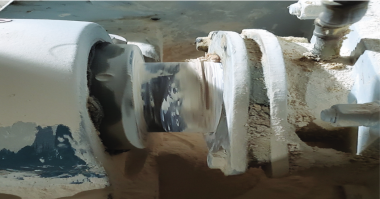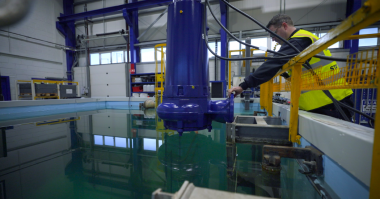Making sense of wastewater treatment regulations is critical for professionals who work in this industry. Failing to meet what regulators demand leads to costly fines. There may also be other negative impacts on the bottom line, such as those linked to making unplanned upgrades to get back into compliance. Here are some actionable strategies people can follow to ensure their facilities operate in line with regulatory requirements.
Stay Knowledgeable About Federal and State-Level Requirements
One of the challenging things about wastewater treatment regulations is that federal and state bodies make rules to follow. Organizational leaders at wastewater treatment facilities must take it upon themselves to stay abreast of applicable requirements.
Wastewater treatment facilities also need specific permits. Those permissions stipulate which actions they can and cannot take during operations. Consider how Florida has more than 4,100 domestic and industrial wastewater facilities. Each one has an individual permit, and only a small percentage of the total can discharge to surface waters. At the federal level in the U.S, the Environmental Protection Agency (EPA) has numerous effluent regulations to follow.
People cannot hope to stay in line with those rules if they don’t know them in the first place. Thus, they should learn the most appropriate reference websites for their areas. Government-hosted sites are usually the most accurate options since the regulators themselves often publish them.
Collect Appropriate Data
People often say you can’t track what you don’t measure. That’s why collecting data that reveals whether a facility is in line with regulations is vital. Fortunately, it’s easier than ever to do that with integration solutions. These are readily available and enable the data collection and control associated with multiple platforms in a plant.
Wastewater treatment leaders that collect real-time data must be able to see what’s happening in a plant at any time. They can then use it to make confident corrections before things get out of control.
Thoughtfully collected data can also fit into large organizational goals. Perhaps a wastewater treatment facility has a long-term sustainability plan. Part of it could be achieved by using a carbon calculator to get a baseline. From there, they could take specific actions to reduce the company’s carbon footprint, bringing it closer to environmental ideals.
People may need to adjust their data-collection processes to match wastewater treatment regulations.Even if that takes a significant amount of time, it should pay off in the long run by giving professionals better visibility into what’s happening at a plant.
Treat All Wastewater Treatment Regulations as Subject to Updates
Industry professionals must also realize that regulations often evolve. They risk falling behind if they don’t try to keep up. In one real-life example, a wastewater treatment plant in the Canadian city of Nelson could no longer meet regulations. That was because the plant flew under the radar for years and did not receive permits that reflected all updates.
A city official eventually determined that the plant must undergo significant updates or cease operations in its current facility and transfer to a new one to get back in compliance. Staying in compliance by making gradual changes to match current regulations is almost always less expensive and labor-intensive than doing major overhauls when there’s no other option.
Examples of recent updates to regulations are the federal ones associated with PFAS, a group of manufactured chemicals. The Environmental Protection Agency has published health advisories for four PFAS compounds as parts per trillion or quadrillion. These chemicals are in many everyday objects, and identifying all of them is a major challenge.
In the context of wastewater treatment, professionals in the sector must identify PFAS chemicals through appropriate testing methods. The next obstacle is to remove them before the substances go into publicly available water sources. Industry professionals can start thinking about how to monitor these substances now that federal regulators have published information about PFAS limits.
Make Meeting Wastewater Treatment Regulations an Ongoing Commitment
People cannot only focus on wastewater treatment regulations for a few weeks or months out of the year before moving on to another priority. They must remain a constant concern during all operations.
Suppose professionals have previously had trouble staying in compliance. They may wish to partner with an auditor to help them see the organization’s strengths and weaknesses regarding wastewater treatment regulations. Virtually all facilities have room for improvement, but they’re also probably doing some things well.





Comments